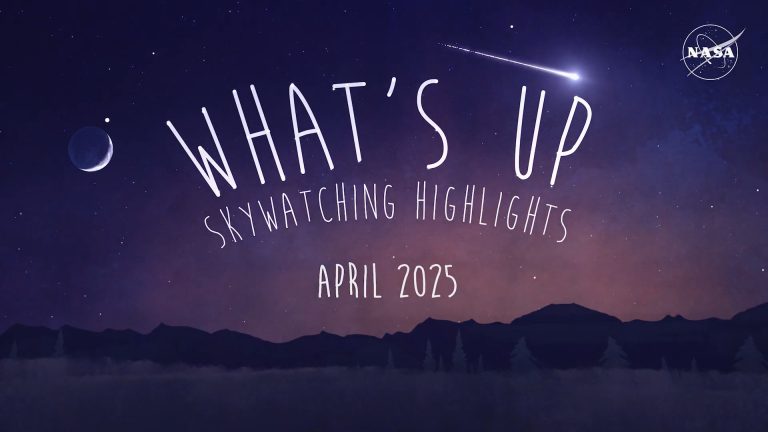2024年9月9日
Mars: Moon, Craters, and Volcanos
Image Credit: ESA, DLR, FU Berlin, Mars Express; Processing & CC BY 2.0 License: Andrea Luck; h/t: Phil Plait
Explanation: If you could fly over Mars, what might you see? The featured image shows exactly this in the form of a Mars Express vista captured over a particularly interesting region on Mars in July. The picture’s most famous feature is Olympus Mons, the largest volcano in the Solar System, visible on the upper right. Another large Martian volcano is visible on the right horizon: Pavonis Mons. Several circular impact craters can be seen on the surface of the aptly named red planet. Impressively, this image was timed to capture the dark and doomed Martian moon Phobos, visible just left of center. The surface feature on the lower left, known as Orcus Patera, is unusual for its large size and oblong shape, and mysterious because the processes that created it still remain unknown. ESA‘s robotic Mars Express spacecraft was launched in 2003 and, among many notable science discoveries, bolstered evidence that Mars was once home to large bodies of water.
Tomorrow’s picture: golden space horse
火星的卫星、撞击坑与火山
影像提供: ESA, DLR, FU Berlin, Mars Express; 影像处理与CC BY 2.0授权: Andrea Luck; h/t: Phil Plait
说明: 如果你能飞越火星,可能会看到什么?这幅由火星特快车号摄于今年7月、俯视火星上一块特别有趣区域的主题影像,正是此提问的答卷。影像的右上方,可见到火星最著名的景点奥林帕斯山,它同时也是太阳系中最大的火山。影像右侧的地平线上,可见另一座火星大火山帕弗尼斯山。在这颗名副其实的红色行星表面,还可见到几个圆形的撞击坑。而这张影像拍摄的时间,也抓得非常精准,刚好记录到出现在中左方黝黑、注定灭亡的火卫一。左下方的表面特征称为欧克斯凹口(Orcus Patera),因其大小及长椭圆形状而著称,同时它也很神秘,因为其形成它的过程至今仍不明。欧洲航天局的火星特快车号太空船于2003年发射升空,除了完成了许多重要的科学发现之外,它也为火星曾有大水体提供了支持的证据。
明日的图片: golden space horse








One Comment